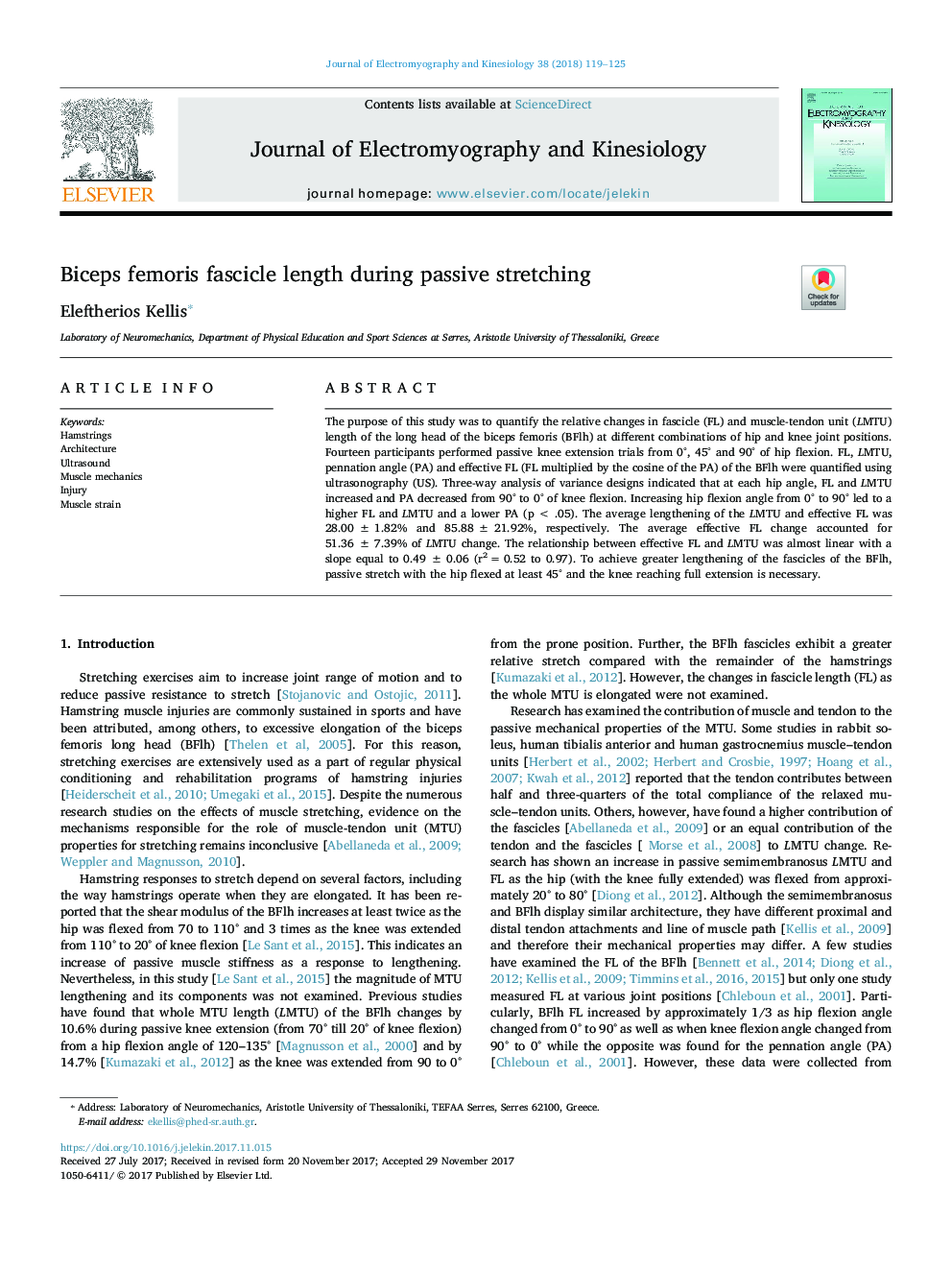| Article ID | Journal | Published Year | Pages | File Type |
|---|---|---|---|---|
| 8799838 | Journal of Electromyography and Kinesiology | 2018 | 7 Pages |
Abstract
The purpose of this study was to quantify the relative changes in fascicle (FL) and muscle-tendon unit (LMTU) length of the long head of the biceps femoris (BFlh) at different combinations of hip and knee joint positions. Fourteen participants performed passive knee extension trials from 0°, 45° and 90° of hip flexion. FL, LMTU, pennation angle (PA) and effective FL (FL multiplied by the cosine of the PA) of the BFlh were quantified using ultrasonography (US). Three-way analysis of variance designs indicated that at each hip angle, FL and LMTU increased and PA decreased from 90° to 0° of knee flexion. Increasing hip flexion angle from 0° to 90° led to a higher FL and LMTU and a lower PA (pâ¯<â¯.05). The average lengthening of the LMTU and effective FL was 28.00â¯Â±â¯1.82% and 85.88â¯Â±â¯21.92%, respectively. The average effective FL change accounted for 51.36â¯Â±â¯7.39% of LMTU change. The relationship between effective FL and LMTU was almost linear with a slope equal to 0.49â¯Â±â¯0.06 (r2â¯=â¯0.52 to 0.97). To achieve greater lengthening of the fascicles of the BFlh, passive stretch with the hip flexed at least 45° and the knee reaching full extension is necessary.
Related Topics
Health Sciences
Medicine and Dentistry
Orthopedics, Sports Medicine and Rehabilitation
Authors
Eleftherios Kellis,
